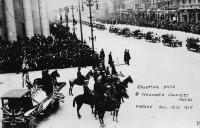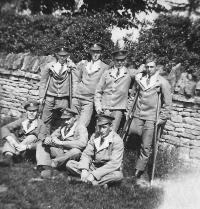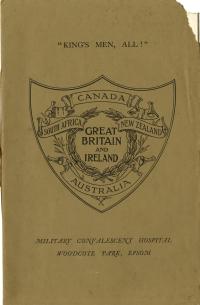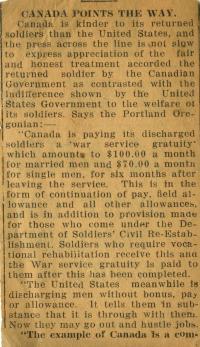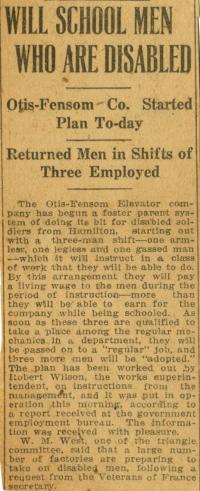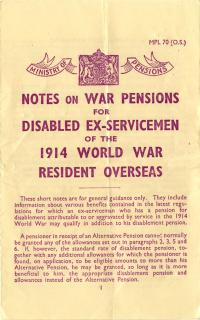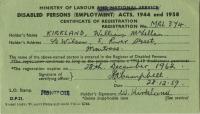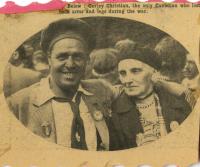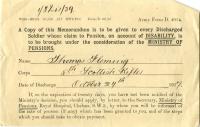Returning
Discharge Depot
Wounded Canadian soldiers were honourably discharged if unable to return to duty. This photograph, taken on 2 September 1916 at the discharge depot in Quebec, featured many soldiers with canes.
Wounded Soldiers on Parade
This photo is an example of the type of public reaction wounded and returning soldiers received from the public. This parade was held on 12 November, 1915.
Convalescent Patients
Before being discharged home, wounded soldiers spent their time at convalescent hospitals. This group of soldiers were at the Voluntary Aid Detachment Hospital in Weston Favell, United Kingdom.
Military Convalescent Hospital Epsom
This military convalescent camp in Woodcote Park, Epsom, was one of the largest of its kind in the United Kingdom. This brochure features numerous images of the camps amenities and its patients.
Canada Points the way
This newspaper clipping discussed the contrast in treatment of returned soldiers by the Canadian and American governments.
Education for the Disabled
The Otis-Fensome Elevator Company of Hamilton, Ontario offered workplace education to disabled veterans in order to support their return to the workplace.
War Pensions for Disabled Veterans
This leaflet printed in 1948, provided information on war pensions for disabled veterans of the First World War.
Registration of Disabled Persons
This certificate of registration for the Disabled Persons (Employment) Acts, 1944 and 1958 was given to disabled veteran William Kirkland in 1959.
Curley Christian
Ethelbert ‘Curley’ Christian was a black Canadian, and the only quadruple amputee of the First World War. He was buried under rubble from German artillery fire for two days during the battle of Vimy Ridge. After being found alive, the stretch-bearers carrying him to safety were killed by enemy fire, despite this, he was brought to safety.
Army Form D
This memorandum belonged to disabled veteran Thomas Fleming of the 8th Scottish Rifles, and was used to claim disability on his pension.


